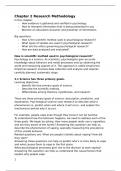Summary
Summary - toelatingstoets psychologie RUG
- Course
- Institution
a good and comprehensive summary of chapters 2.4 and 12 for the psychology entrance test. the chapters and sections are clearly indicated and terms are italic. the summary is quite extensive, but therefore very clear.
[Show more]












